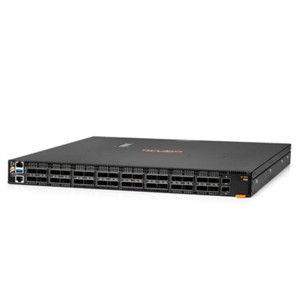Survivability for aged care facilities has never been tougher. Two out of three nursing homes are losing money[1], and many smaller ones are being acquired. A raft of new regulations around mandatory care minutes is adding additional staff and administration burdens to the list of challenges faced by an already squeezed industry. On a more positive note, the fast pace of regulatory change is pushing this traditionally tech-averse sector (only 10% of aged care providers signed up for MyHealthRecord, and only 3% actually use it[2]) towards equally rapid digitisation, and it's creating a new more efficient and productive aged care experience as a result.
Let's begin with a recap of the latest residential aged care reforms.
The compliance conundrum
The Australian government is imposing mandatory care times for residents and requiring Registered Nurses to be on site 24/7. Notably, these care minutes are directly connected to funding - making it incredibly important for providers to meet the staffing levels, minimum care limits, and the attached reporting and compliance.
While the government is throwing $2.5 billion over four years[3] into the pot to support an increase in staff, many providers are rightly frustrated about the growing cost of compliance these mandates demand. The challenge is further multiplied because many providers continue to use archaic timesheet methods for a number of administrative tasks, including time tracking. Reporting will no doubt be onerous. Employees, too, will be forced to much-needed time away from resident care to undertake a series of box-checking exercises.
So, how can aged care facilities meet the new requirements without adding more costs to already razor-thin budgets?
The answer, we believe, lies in strategic technology investments. As networking solution specialists, we know that digitisation provides new compliance management avenues - beyond adding more people. These are solutions that can support staff in being more efficient - and even replacing some functions altogether. At its core, the technology is simple: An effective compliance program requires effective measurement tools. And with better compliance measurement, facilities achieve better compliance management.
As you will soon see, on top of the immediate benefits of reporting, injecting innovative technology into facilities will pave the way to even more use cases. Ones that can drive efficiency and productivity into all corners of operations.
Automated care minute tracking and reporting
The most notable problem encountered is gathering and collecting care minute data. Rather than manually capturing every interaction between caregiver and resident, providers can use Real-Time Location Systems (RTLS) technology to automatically identify and track interactions between caregivers, nurses and residents to ensure residents get the required level of care. Staff simply go about their duties while wearable devices record interactions when they are within proximity (0.5m) of a resident. The aggregated minutes can then be viewed from the system, with system alerts when care levels are falling short. If compliance of the facilities mandates the use of separate isolated and managed systems, the RTLS system can integrate with an existing Care Delivery Management System, Business Intelligence (BI) or AN-ACC reporting platform.
This solution appeases staff because they no longer have to manually track time spent with residents, and there is no set-up or actions to take. It just works. For administration, all the centralised and accessible data can be quickly turned into reports. What would have taken many hours suddenly happens in minutes.
More automation use cases across the facility
Beyond addressing compliance and reporting, facilities can implement other use cases utilising the RTLS technology deployed. We have implemented solutions including:
- RTLS to automate workflow processes, drive efficiency and support better patient care. For example, nurse call automation can be used to clear patient calls automatically, and create a time stamp when a caregiver enters the room.
- The proximity function of RTLS can provide historical data to inform contact-tracing efforts.
- Critical and expensive medical device and equipment inventory can be tagged and traced throughout the facility to increase asset availability and prevent inventory loss or theft.
- RTLS can alert staff if residents start to wander, preventing them from entering a potentially harmful situation, or be used in preventative fall management.
- RTLS tags can monitor the precise temperature of medication and food refrigerators. Should the fridge drop above or below the set temperature threshold, staff receive an alert to take appropriate action.
The value of automation in care
Across these use cases, a key theme has emerged - the automation and streamlining of care and non-care duties. Introducing these capabilities will free up employees time - an enormous amount of which is spent on non-care tasks – to vastly improve the overall quality of care.
With two in five aged care workers indicating they may resign in the next five years[4] - partly due to stress and excessive paperwork – introducing technologies to support staff better in their roles will not only help retain, but also attract talent.
It's not just staff you want to attract either; there are new residents to consider. Facilities can build, or maintain, their reputation by providing smart technology solutions that facilitate better communication (to staff, residents, and their families) and meet the residents' multi-faceted physical and mental well-being needs.
Customer story: Digital transformation in action
At Matrix CNI, we work closely with clients in the aged care industry to combine the best of modern networks, security, communications, and strategy to create efficiencies that bolster the care experience for residents and staff. One example is Gallipoli Home who set out to work smart and create a facility known for superior care and a first-class resident experience.
RTLS technology in aged care delivers smoother processes, better insights and superior residential care. But only for those who are ready to step up and create a new technology-augmented experience for the business, staff and residents.
The Matrix managed services solution
We are your valuable network consultants, system architects and integrators who will support you in your digital transformation. And this isn’t about replacing what you have, but overlaying the right solutions to take you on this journey – from strategy, to implementation, training and support.
Contact us to find out how we can help.
[1] news.com.au (2022), Chilling warning that aged care sector at risk after huge losses [ONLINE]. Available here.
[2] Ageing Agenda (2021), Aged care provider uptake of My Health Record remains low [ONLINE]. Available here.
[3] Australian Government (2022), Budget October 2022-23 [ONLINE]. Available here.
[4] Aged Care Insite (2021), One in five aged care workers could resign due to stress and low wages [ONLINE]. Available here.


